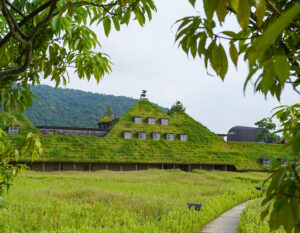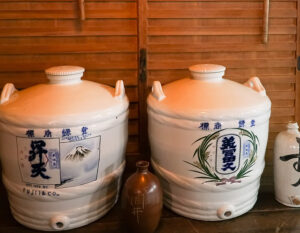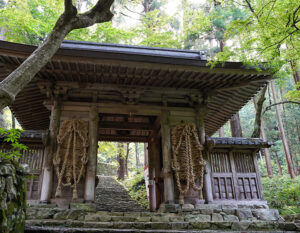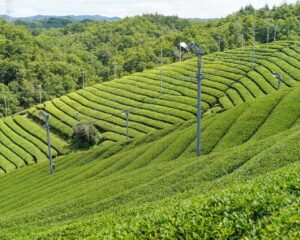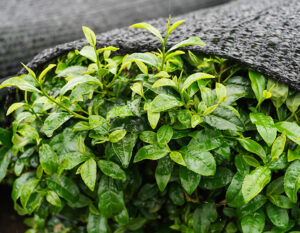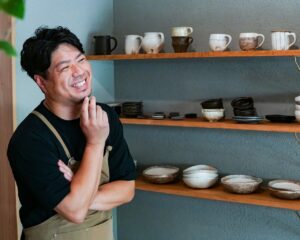Many people go to see castles for the love of history and architecture, but how many pay attention to the stone walls? In Sakamoto, Otsu City, Shiga Prefecture, the gate town of Hieizan Enryaku-ji Temple, the skills of the Anou-shu, a group of craftsmen specializing in stone wall building, are still being passed down today. We asked the Anou-shu about the origins, activities, and present day of the craftsmen, who have passed on all their skills only by oral tradition.
Anou-shu, a group of craftsmen specializing in stone wall building
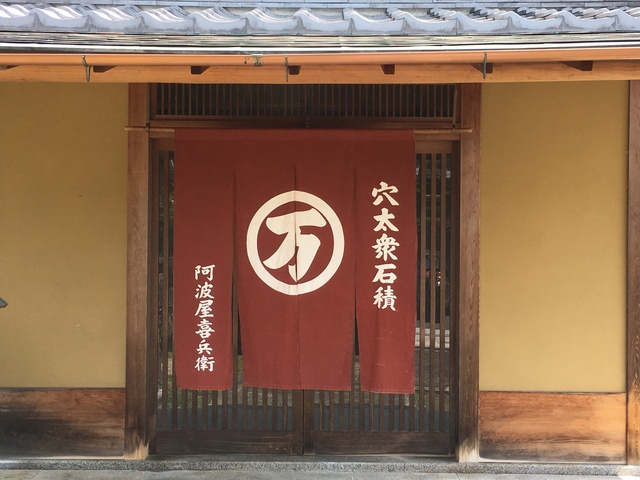
Sakamoto, Otsu City, is located on the western shore of Lake Biwa in front of Hieizan Enryaku-ji Temple. In this town, known as the ” village of stone piles,” you will be greeted by magnificent stone walls everywhere you walk along the streets. The Anozurashu, a group of stone masonry craftsmen active mainly during the Warring States period, specialize in ” nozurazumi,” or piling up natural stones without processing them. The Anata-shu, who used their advanced skills to build solid stonewalls, were favored by feudal lords throughout Japan, and it is said that 70 to 80% of the stonewalls of castles in existence were built by the Anata-shu.
Roots in the Kofun Period
The roots of the Anata-shu are said to lie in the migration of people from the Korean Peninsula to Japan during the Kofun period, when Saicho founded Enryaku-ji Temple on Mt. The craftsmen were based in an area called Anou, which is why they were called Anou-shu.
Although masonry construction is associated with Europe, a large amount of concrete was already used in the Colosseum in Rome, which was built in 80 AD. Japan is an island nation where adhesive technologies such as cement and concrete were not introduced, and because Japan is an earthquake-prone country, strong foundations were needed under buildings to withstand shaking. Because of the climate of Japan, the technique of masonry was dramatically advanced and refined into a unique skill. Even today, no adhesives are used in Ano-shu masonry.
Nobunaga fell in love with their masonry techniques
The Ano-shu became famous when Oda Nobunaga built Azuchi Castle on the eastern shore of Lake Biwa. 1571, when Hieizan was burned down, Nobunaga ordered the remaining stone walls to be torn down so that they could never be rebuilt. However, no matter how much he tried to break down the stone walls, they did not collapse. Nobunaga was so surprised by the solidity of the walls that he mobilized the Anata-shu to build Azuchi Castle. Since then, the name of Anata-shu has become well known throughout Japan, and it is said that Anata-shu later worked on Himeji Castle, Takeda Castle, Osaka Castle, Nagoya Castle, and Edo Castle.
Anata-shu craftsmanship was licensed, and it was a rule that no matter how much skill was honed in various parts of the country, the craftsmen had to return to their home region to complete their training before they could claim the name of their craftsmen. Therefore, when a new craftsman took over, he always came to Sakamoto for training and inherited the Anata-shu name. This shows the importance he placed on passing on authentic techniques as a craftsman.
Awata Construction is the only company in modern times to carry on the Anata-shu’s techniques.
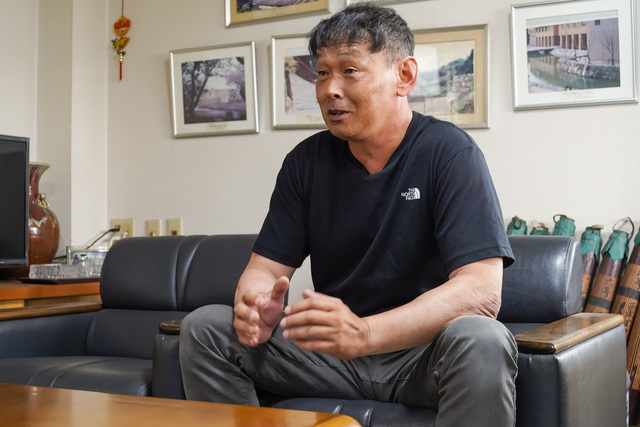
Suminori Awata of Awata Construction Co. Based in Sakamoto, Otsu City, Shiga Prefecture, where the splendid stone walls once piled by the Anodashu still remain, Suminori Awata continues to work throughout Japan as the 15th head of the Anodashu.
It is said that there were thousands of Anata-shu throughout Japan in their heyday, but today only Awata Construction is left. Stone wall building is not just about piling stones; it is a division of labor system, with people cutting stones from the mountains, transporting them, and piling them. When the Warring States Period ended and new castles were no longer being built, the people who quarried the stones were assigned to work on gravestones and other stonework, while those who carried the stones were assigned to work as “flying expeditions” or other transportation jobs, and the work became scattered. Those who piled stones lost their jobs, but thankfully we have Enryaku-ji Temple on Mt. Hieizan nearby, and there are many shrines and temples in Shiga Prefecture. Thanks to this, we are able to continue our work by adding stone walls and undertaking restoration and civil engineering work,” he says.
It is a matter of course that once stone walls are piled up, they last for 300 or 400 years. Today, it is difficult to continue masonry as a business, but he still hopes to somehow pass on this skill to future generations.
What I think about restoring stonewalls
Today, when new castles are no longer being built, most of his work involves the restoration of stone walls that have collapsed due to earthquakes or deterioration.
The stonewalls of Kumamoto Castle, which collapsed in the 2016 Kumamoto earthquake, were originally built by Anata-shu, but most of those that collapsed due to the earthquake were parts that were repaired during the Meiji period without using Anata-shu techniques. On the other hand, the parts built 400 years ago remained intact. The ironclad rule for the restoration of cultural properties is to “restore to the original state,” but is it really better to return to the state in which they were restored in the Meiji era before the collapse? Mr. Awata also believes that the fact that the entire foundation had been reinforced with concrete may have been a cause of the collapse. With the recent increase in the number of major earthquakes, perhaps it is time to stop and think about whether modern technology alone is really the best choice.
Stone walls made of natural stone stronger than concrete
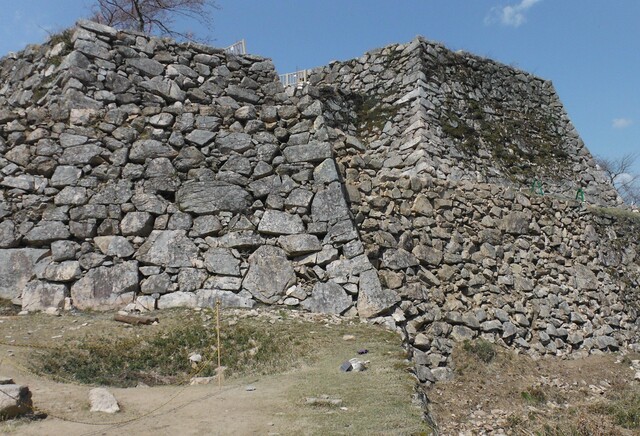
Anotashu is specialized in ” Nosazurazumi,” a method of piling up natural stones without processing them. This technique can be seen in the stone walls of Takeda Castle (Hyogo Prefecture) in the photo. There are other stone wall piling techniques, such as “Uchikomi-hagi,” a technique in which stones are processed and piled up by interlocking them, as seen at Himeji Castle, and “Kirikomi-hagi,” a technique in which stones are completely cut into squares and piled up without gaps, as seen at Nijo Castle. In Shiga Prefecture, the technique used at Azuchi Castle is called “field face piling. In Shiga Prefecture, you can actually see a stone wall made of field masonry at Azuchi Castle.
When Ano-shu received a request, they first went to the location and piled up stonewalls using local stones wherever they went. The reason castles of the Warring States period were built on top of mountains is that they were built in places where stones could be extracted. Mr. Awata says that masonry begins with the selection of stones. First, he draws a plan in his mind, stares at the stones, thinks, “This stone will be used here, that stone will fit here,” and brings the stones home. It is no exaggeration to say that 70 to 80% of his work is completed at the stone selection stage.
The secret to building a strong stone wall lies in the ” chestnut stones ” that cannot be seen from the outside. By carefully filling the stone walls with fine stones called chestnut stones, they provide cushioning in the event of earthquakes and improve drainage, making the walls less prone to collapse. There is also ingenuity in the way the stones are stacked. By piling the stones horizontally, the entire weight is supported by the wide base, and the stone wall is designed so that gravity is applied about one-third of the way back from the surface, making it difficult for the wall to collapse. In a load-bearing test of the stone wall and concrete blocks piled by Anotashu, the concrete cracked at 220 tons, while the stone wall continued to withstand 250 tons of weight, which is surprising.
Listen to the stones.”
When the stone walls are piled up, there are moments when a stone fits perfectly in its place when you place it. When that happens,” Awata says, “I am happy because I feel like I can hear the stone’s voice. Listen to the voice of the stones. Let the stones go where they want to go, not where we want them to go,” is what Mr. Awata has been told by his predecessors. Stones are just like the world. Every stone, no matter what its shape, has a role to play, and none of them are useless. He has been told that each stone has its own individuality in terms of appearance, character, and so on, and that the combination of all these elements makes up the stone wall.
Stone walls have a completely different finish depending on who piles them. It shows your personality. For example, my grandfather is delicate and follows the shape of the stone precisely. My father was rather rough, piling up large stones and then filling in the gaps with smaller stones. I learned masonry from my grandfather, so I have inherited his method of piling stones in small pieces,” he says. When he sees stonewalls at restoration sites, he has a vague idea of the kind of person who piled them. There are times when I think, “They cut a few corners here and there,” or “If they had been more careful, the walls would not have collapsed,” but the most important thing for castles built in the Warring States period was how quickly they could be completed. Stone walls that would normally take six months to assemble and more than a year, including preparation, were completed in one or two months in those days. The influence of the Anata-shu on castle building during the Warring States period is immeasurable.
Masonry Techniques Passed Down Orally for 400 Years
The Ano-shu’s masonry techniques were all passed down orally. There are no written records left behind. The blueprints of castles and stone walls are what we now call military secrets. If they were to be passed on to the enemy, everything would be exposed, from the devices used inside the castle to effective methods of attack. This is the reason why the Awata family, which is said to have existed for more than 1,000 years, still counts only 15 generations.
During the Warring States Period, local farmers helped pile stones under the direction of the Anata-shu. The main means of transportation in those days was oxen and horses. Therefore, castles were not built in spring and fall, when farmers were busy with agriculture. The Anata-shu’s technique of combining natural stones, no two of which were the same, and which was passed down in strict secrecy to a limited number of craftsmen, may have made it difficult to preserve it in written form.
I will not build a stone wall that will collapse in my son’s or grandson’s generation.
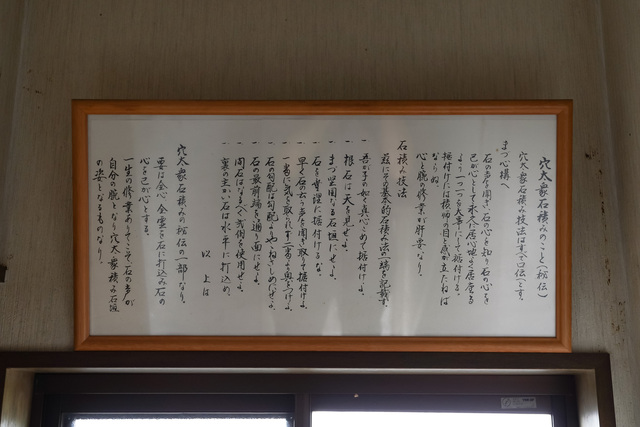
Our work is very special. If we build something that will last for 400 or 500 years and it collapses, people say we are not good at it. Sometimes I wonder how long it will last before I am considered good at my job, but that is why I am so particular about the strength of my work. Nowadays, many people may think it is better if the stone wall looks pretty and if it lasts as long as they live, it is enough, but I do not want the name of Awata to remain on the stone wall and when it collapses hundreds of years from now, people will say, “The 15th generation of Awata was not good at it. We are one of the last houses in Anata. I don’t want to build a stone wall that will collapse in my son’s or grandson’s generation with this technique that has been trusted to be resistant to earthquakes and disasters,” said Awata.
It is a difficult job and requires a lot of determination, but he is determined to carry on this technique.
What does Mr. Awata think is a great stone wall?
We asked him about great stone walls from a professional’s point of view. He replied, “My personal favorite is Takeda Castle in Hyogo Prefecture. It is said that this stone wall was also built by Anotashu. You can see a unique stone wall that is a well-balanced combination of natural stones of various sizes,” he said. Four hundred years have passed since the castle was abandoned and no buildings remain, but the stonewalls remain almost exactly as they were, and the Awata family has been entrusted with their restoration for three generations. The Awata family has been entrusted with restoring the stonewalls for three generations. “I learn a lot from watching my grandfather and father repair the stonewalls, and I have a special attachment to them,” Mr. Awata smiles.
By looking at the stonewalls, one can learn about the thoughts of the castle’s owners and the historical background of the time. During the Warring States period, the structure of a castle was a matter of life and death. By looking at the route, we can realize that they must have ambushed here, and if the stone walls are bold and warped, we can guess that they are from the Azuchi-Momoyama period. It is also interesting to note that the stone steps of Azuchi Castle are overtly made of gravestones and jizo, which gives us a glimpse into the background of the period when stones were in short supply due to the rush to build the castle and the temper of the castle’s lord, Nobunaga.
To preserve the beautiful Japanese landscape
Mr. Awata is sometimes invited overseas to lay stone walls. When he worked in the U.S., he says he was moved to tears when he saw a Japanese man living there say, ” These stone walls remind me of Japan.
I have a son, but if things continue as they are, it will be difficult for me to proudly tell my son to take over. I can see that he will have a hard time. For that reason, I have to somehow create a path for him while I am still able to work,” says Awata. He is also actively taking on overseas work, and says he hopes that the stone walls will attract attention, which will lead to a time when the appeal of masonry will be reevaluated in Japan as well.
In Tokyo, one can see a stone wall piled by Awata Construction used as an Olympic memorial monument at Bajikouen. It is rather small, but it was made entirely by hand, reusing the stone walls of Edo Castle. Touch the stone, listen to its voice, and ponder the skills that have been passed down from one generation to the next.




